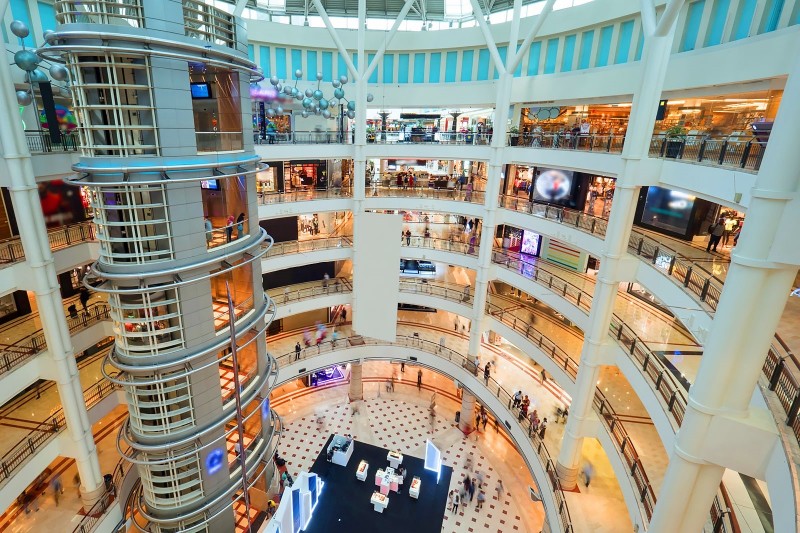
Image credit: Hotel.com
Malls in Kuala Lumpur are seeing huge crowds even on weekdays, which was not the case even before the Covid-19 pandemic.
Most shopping complexes are experiencing long queues, packed food courts, crowded restaurants and full parking bays.
It makes one wonder whether the people are actually buying goods or just window shoppers.
Malaysia Shopping Malls Association president Tan Sri Teo Chiang Kok attributes this phenomenon to the malls’ location and target market.
“Malls are in various stages of recovery; some are better off than others, depending on their location and their shopper target market,” he said.
“Footfall has recovered with some exceeding pre-Covid-19, besides cursory feedback indicating good and confident recovery.
“In some popular malls, it definitely does not look like just window shopping.
“People are buying goods and patronising food and beverage (F&B) outlets, which are crowded even during non-peak hours,” he added.
On the migration of some fashion brands to online platforms and the popularity of brick-and-mortar shops, Teo said there was always change in the retail and mall industry.
“Some leave and other new ones open, which happens all the time even before the Covid-19 pandemic.
“Brick-and-mortar shops are definitely still relevant.
“Online businesses have opened up physical stores because you need both online and physical facilities to better serve customers, especially for ‘try, touch, feel and fit’ products,” he explained.
To remain competitive and relevant, Teo said these shops had to pivot quickly to any changes in consumer trends.
Based on the association’s data, he said there were currently some 458 malls with 155.7 million sq ft space in Malaysia as at the end of 2020.
With the inclusion of other retail centres such as stand-alone hypermarkets, department stores, supermarkets and bazaars, he said the number now was 701 with a total of 185.8 million sq ft space.
Teo agreed that new developments should incorporate malls into their projects.
“Providing service and shopping elements are crucial to meeting all the needs and expectations of those working and living in mixed-use integrated developments,” he emphasised.
He also said that no malls had closed down due to the pandemic.
“Businesses are reopening and in various recovery and revival stages. Some are in the consolidation phase, requiring the closure of less-performing outlets.
“It is the nature of malls to constantly change and pivot to reposition themselves with new shops and merchandise,” he added.
On the popularity of online shopping, Teo reiterated that malls were still relevant, especially neighbourhood malls, based on consumer shopping habits during the movement control order.
He said high street malls in the central business district or select locations for fashion and other types of high-end merchandise were important within the retail landscape.
Although retail sales have been encouraging and foot traffic data has gone up to the level of pre-pandemic days, Malaysia Retailers Association president Datuk Andrew Lim Tatt Keong has cautioned that it may not be sustainable.
“We had good Chinese New Year and Hari Raya sales this year, similar to 2019.
“The RM10,000 Employee Provident Fund special withdrawals helped stimulate consumer demand but now we are seeing a slowdown, which is also pretty normal after a festival,” he said.
Lim, however, expressed concern over rising inflation, cost increases due to labour shortage and the higher minimum wage.
Echoing his view is Bumiputera Retailers Organisation secretary-general Mohamed Mustakim Manaf, who said that across the board, fashion, pharmaceutical, optical and F&B did well, and spending was strong in April.
“But will it last? We saw a drop in (spending) last May.
“In the F&B industry, there are many competitors and these entrepreneurs face many challenges, particularly the labour shortage,” he said.
“Buying power is there but operating expenses are a huge challenge.
“These businesses need to make enough to cover the losses suffered in the last two years.”
Expressing concern for the long haul, Mohamed said malls depended largely on tourists and it also depended on content.
“We already have many malls in the city and many more are soon to come.
“Without tourists, our (domestic) market is too small.
“So ultimately it boils down to content.
“Consumers will eventually gravitate towards the ones that have the best variety,” he said.
Source: https://www.thestar.com.my/metro/metro-news/2022/07/04/retailers-cautiously-optimistic-despite-crowds-at-malls

